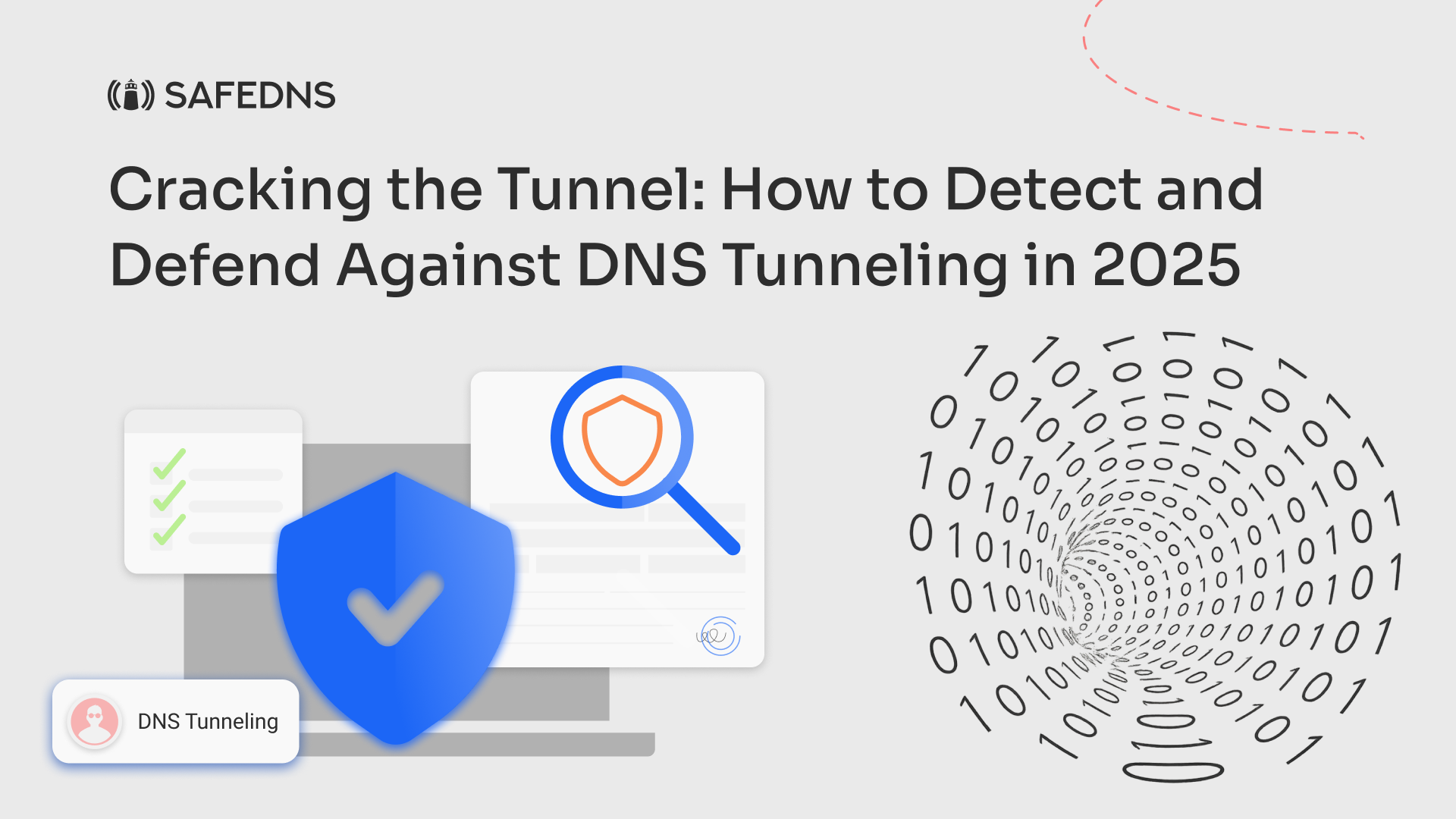
Cracking the Tunnel: How to Detect and Defend Against DNS Tunneling in 2025
Given the threat posed by DNS tunneling, organizations should implement measures to detect and block such channels. Detection usually involves looking for anomalies in DNS traffic patterns: unusually long domain names, often a giveaway of encoded data, high volumes of DNS queries to domains that aren’t commonly accessed, a lot of TXT record requests, or consistent DNS traffic to an external domain with no associated web traffic. Security teams can use specialized tools or DNS logs to spot these indicators. For example, if a single internal host is making thousands of DNS queries to an obscure domain every hour, that’s a red flag. Some intrusion detection systems and DNS security solutions apply machine learning to identify the statistical footprints of DNS tunneling. Additionally, threat intelligence can help, known domains or signatures of popular tunneling tools can be blacklisted.
Indicators of DNS Tunneling. Behavioral Red Flags
To detect tunneling, look for anomalies that deviate from legitimate DNS usage patterns:
– Excessively Long Domain Names. Encoded data results in very long subdomains suspicious if consistently >100 characters.
– High Query Volume. Thousands of queries per hour from a single host, especially to uncommon domains.
– Frequent TXT Record Lookups. Abnormal reliance on TXT or NULL records often indicates tunneling protocols.
– Repetitive Requests to a Single Domain. Persistent communication to a domain with no corresponding HTTP/S activity.
– Unusual Query Timing. Regular, evenly spaced DNS traffic (e.g., every 3 seconds) may signal automation.
A specific solution in this space is SafeDNS. SafeDNS can act as an organization’s DNS resolver with built-in intelligence to detect malicious usage. For instance, SafeDNS can intercept all DNS queries made by clients and block disallowed or suspicious queries. Essentially, SafeDNS can recognize when DNS is being used as a tunnel and prevent those queries from reaching the attacker’s server. This is performed through a combination of methods: recognizing domain names generated by tools, payload signatures, or unusual query behavior indicative of tunneling.
Detection Techniques
1. DNS Log Analysis
Tools like SIEM or SafeDNS can analyze logs for tunneling patterns. Look for:
– Entropy in subdomain strings
– Uniform query sizes
– Irregular TLD usage
– Persistent use of rare record types
2. Machine Learning & Behavioral Analytics
Advanced DNS firewalls like SafeDNS use ML models to flag tunneling based on:
– Frequency analysis
– Markov chain models for domain randomness
– User/device behavior correlation
3. Threat Intelligence Correlation
Compare against updated threat feeds for:
– Known tunneling domains
– IPs of public C2 servers
– DNS signatures from tools like Sliver, dnstt, or Chisel
It’s worth noting that as of this writing, SafeDNS’s detection capabilities cover many, but not all, known DNS tunneling tools. Our solution currently is able to detect and block 3 out of the 7 common tools we listed earlier, for example, it may successfully catch Iodine, dnscat2, and DNS2TCP traffic based on known patterns. The remaining tools use techniques that evade basic detection or simply haven’t had signatures created yet. However, SafeDNS is actively improving its coverage, full coverage of all 7 listed tools is planned by August. This means our team is developing updates to our filtering algorithms such that by August, it should be able to identify traffic from Iodine, DNSStager, dnscat2, Sliver, dnstt, Heyoka, and Chisel and similar programs. With this enhanced coverage, organizations using SafeDNS will have an extra layer of defense: even if an attacker tries different DNS tunneling utilities, the DNS security service will flag and block those queries, cutting off the channel.
Of course, no single solution is foolproof. Attackers constantly modify their tactics to avoid detection. Some may implement custom tunneling that doesn’t match known signatures, or they may tunnel very slowly to fly under statistical anomaly thresholds. Therefore, a defense-in-depth approach is recommended. Combine DNS-specific protections, like SafeDNS, with network monitoring, endpoint security, and user behavior analytics. Regularly auditing DNS logs can also uncover a dormant tunnel.
In closing, awareness is key. Many organizations are now waking up to DNS-based threats and are starting to treat DNS traffic with the same vigilance as they treat web or email traffic. Solutions like SafeDNS make it practical to apply that vigilance in real time, shutting down DNS tunnels before they cause harm. By August, with SafeDNS achieving full coverage of known tunneling tools, companies employing it will significantly harden their networks against DNS tunneling attacks. Until then, it’s imperative to use the strategies discussed, monitor DNS, restrict it, and use intelligent DNS security services to keep this covert threat in check.
Take advantage of the SafeDNS trial period and try all the best features

